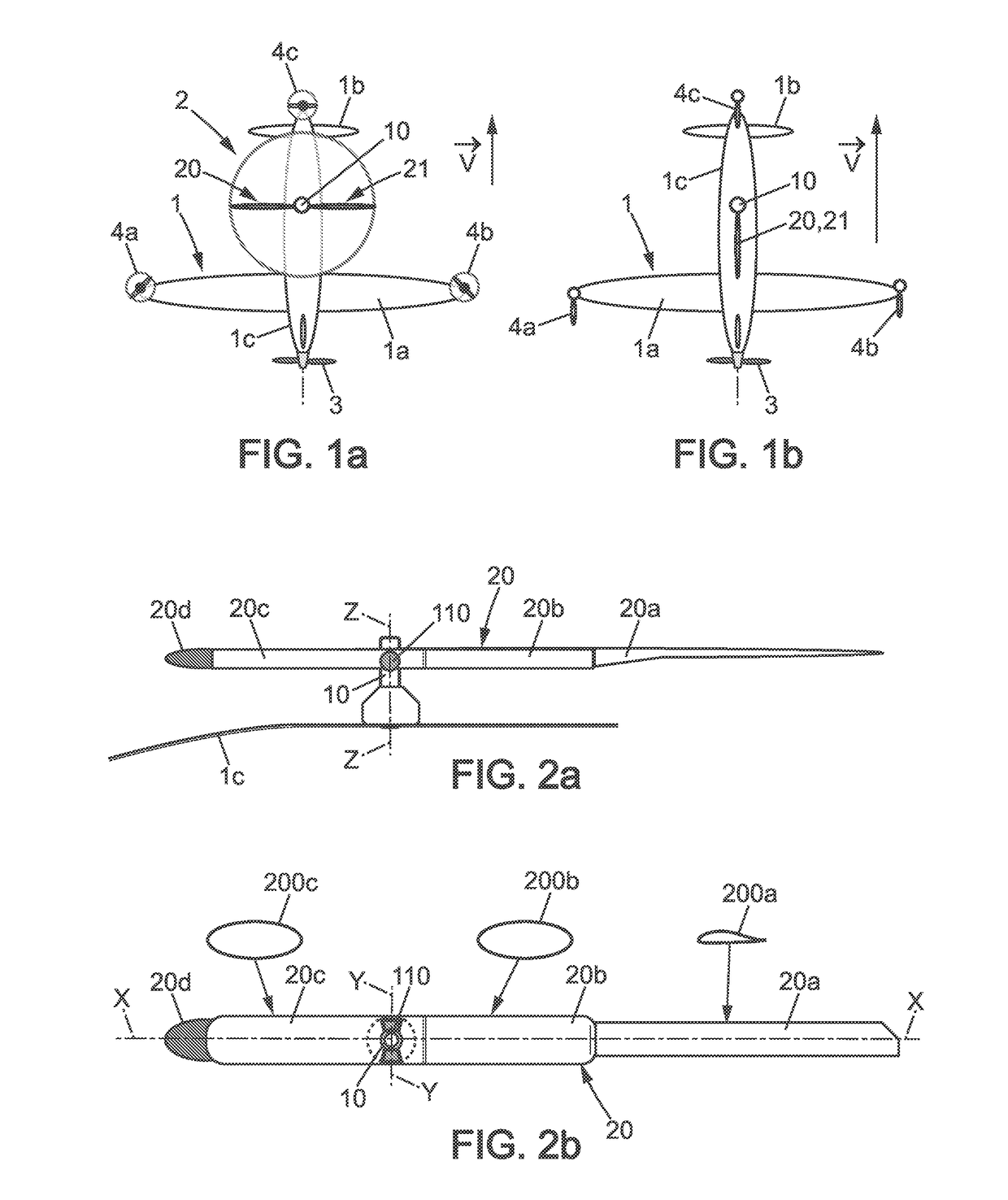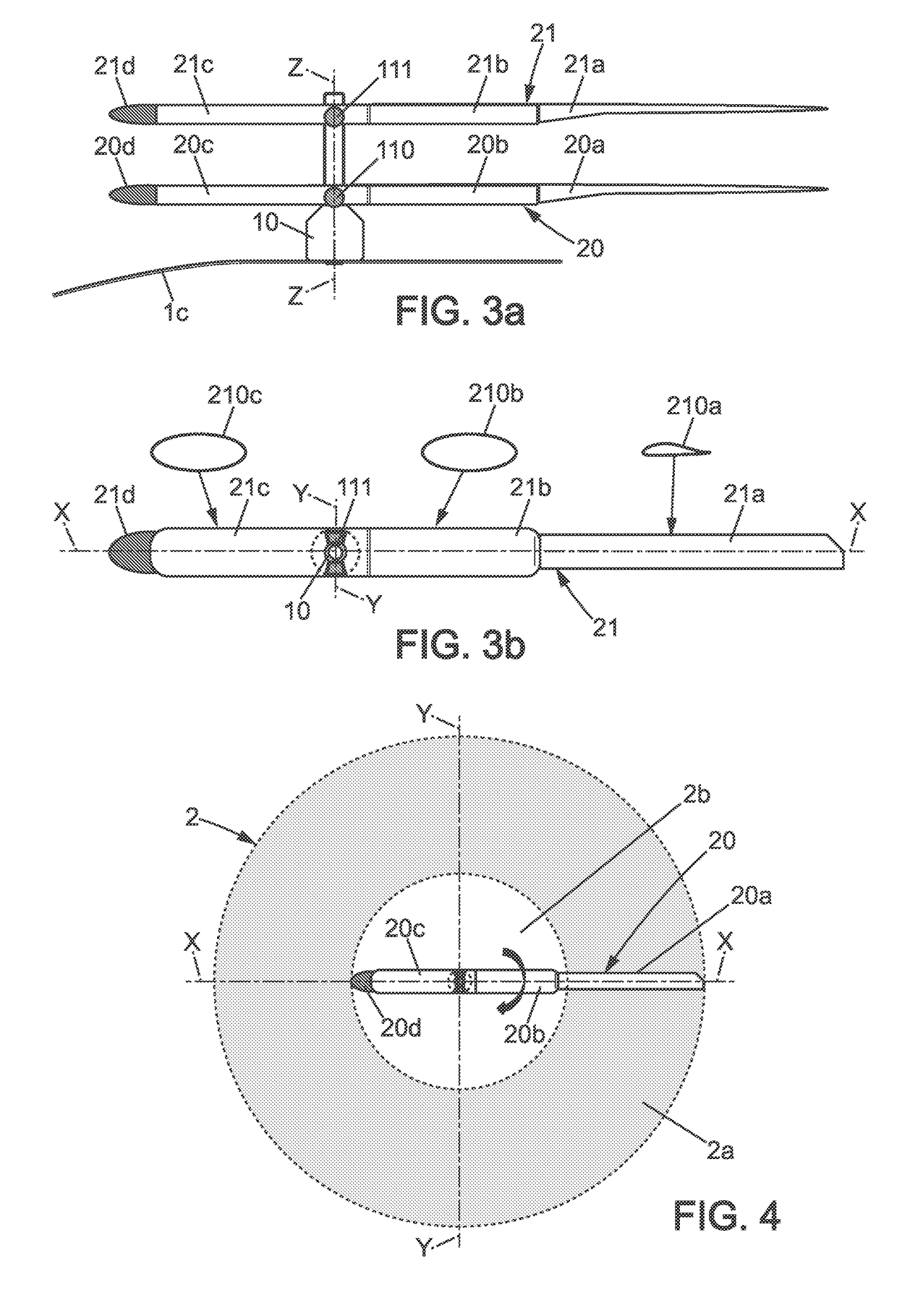Lift rotor and vertical or short take-off and/or landing hybrid aerodyne comprising same
a technology of lift rotor and hybrid aerodyne, which is applied in the direction of vertical landing/take-off aircraft, rotocraft, vehicles, etc., can solve the problems of uncompetitive concept, mechanical complexity and fragile design, and none of those systems have seen genuine development and commercialization, so as to simplify the pitch adjustment mechanism and not be widely used. , the effect of providing li
- Summary
- Abstract
- Description
- Claims
- Application Information
AI Technical Summary
Benefits of technology
Problems solved by technology
Method used
Image
Examples
Embodiment Construction
[0080]Throughout the description below, the same numerical or alphanumerical references are used to designate elements that are identical or analogous in the various embodiments shown in the figures, and apart from the portion of the description given with reference to FIGS. 1a, 1b, 9, 16a, and 16b, the device described is solely the rotor system of the aerodyne for providing vertical lift. Except with reference to FIG. 9, no detailed description is given specifically of the power plant, or of the transmission of power from the power plant to the propeller(s), or of the fuselage for carrying passengers and / or a cargo.
[0081]In all of the figures showing one or more single-blades locked in a stationary position, in “horizontal” cruising flight, the longitudinal axis X of a single-blade is an axis parallel to the roll axis or is the roll axis, going towards the front of the aerodyne, and thus in the travel direction of the aerodyne in horizontal flight, and more generally, apart from s...
PUM
 Login to View More
Login to View More Abstract
Description
Claims
Application Information
 Login to View More
Login to View More - R&D
- Intellectual Property
- Life Sciences
- Materials
- Tech Scout
- Unparalleled Data Quality
- Higher Quality Content
- 60% Fewer Hallucinations
Browse by: Latest US Patents, China's latest patents, Technical Efficacy Thesaurus, Application Domain, Technology Topic, Popular Technical Reports.
© 2025 PatSnap. All rights reserved.Legal|Privacy policy|Modern Slavery Act Transparency Statement|Sitemap|About US| Contact US: help@patsnap.com



